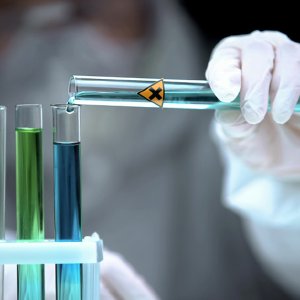What Is the Scope of Synthetic Cannabinoid Abuse Today?

Lab-made and chemically very different from cannabis, synthetic cannabinoids are nevertheless produced and advertised as being “cannabis-adjacent.” Though such substances are marketed this way to seem less dangerous or threatening, the drugs bear very little resemblance to cannabis and are, in fact, quite dangerous.
What Are Synthetic Cannabinoids?
According to the Centers for Disease Control and Prevention, synthetic cannabinoids first became available as drugs of abuse in the U.S. in 2008. Such drugs have since become available in all 50 states, with users exhibiting effects ranging from altered mental states to death. In 2015, U.S. poison control centers received 7,794 calls regarding people who had been using synthetic cannabinoids.
Synthetic cannabinoids are a class of lab-made mind-altering substances that can be chemically similar to cannabis but which produce very different effects in users. Such drugs are typically added in liquid form to vaping devices, or they are sprayed onto dried, shredded plant material to be smoked. Slang terms for synthetic cannabinoids include “Spice” and “K2.”

A disproportionate number of people who use synthetic cannabinoids are people in their 20s and 30s, with many users also using marijuana. Sometimes, users gravitate to synthetic cannabinoids as a way to get a similar high as marijuana, except synthetic cannabinoids do not show up on most cannabis drug screens, which enables users to use the drug and then go to work and appear in court, all while seemingly “passing” their drug tests.
Most synthetic cannabinoids are illegal, but because the drugs are man-made, manufacturers can alter the chemical composition of their product and suddenly have a “legal” product that is not currently outlawed. Such has created a cat-and-mouse landscape between legislators and drugmakers. For example, the Drug Enforcement Administration (DEA) frequently tracks new synthetic cannabinoid strains, with one year recording 84 new strains of the drug type.
Effects of Using Synthetic Cannabinoids
Because the chemical composition of synthetic cannabinoids is constantly changing, it is extremely difficult to predict the effects and outcomes of using the drug. The CDC warns that people who use such drugs may experience neurological effects like:
- Stroke
- Seizures
- Agitation
- Dizziness
- Sleepiness
- Irritability
- Confusion
- Lack of coordination
- Inability to concentrate
Psychiatric signs include:
- Psychosis
- Delusions
- Hallucinations
- Violent behavior
- Suicidal thoughts
People who use synthetic cannabinoids may also experience:
- Death
- Hypertension
- Kidney failure
- Rhabdomyolysis
- Chest pain and heart attack
- Severe nausea and vomiting
Can People Overdose on Synthetic Opioids?

People who use synthetic cannabinoids have reported becoming addicted to them, and they’ve also reported experiencing withdrawal symptoms when they stop using them. Further, there have been cases of people using more potent synthetic cannabinoids than they intended, overdosing on them, and dying.
Some of the severe symptoms of heavy synthetic cannabinoid use include:
- Nausea
- Seizures
- Vomiting
- Sweating
- Headache
- Chest pain
- Palpitations
- Severe anxiety
- Rapid heart rate
- Trouble sleeping
- Difficulty breathing
What is the Scope of Synthetic Cannabinoid Abuse?
The best way to determine the scope of synthetic cannabinoid abuse is to analyze the spike in calls to poison control centers and to examine the increase in synthetic cannabinoid-related ER visits. According to a University of Michigan study, about 11% of high school seniors have used synthetic cannabinoids at least once. About 28,000 annual ER visits are linked to synthetic cannabinoids. About 3,000 to 8,000 people call poison control for synthetic cannabinoid poisoning annually.
The Need for Synthetic Cannabinoid Addiction Treatment
Synthetic cannabinoids are a particularly malicious addition to the drug landscape because, while the drugs produce effects similar to those of natural cannabis, these drugs are very different, chemically, and are far more potent and dangerous. They have been associated with dangerous adverse effects not typically associated with cannabis, too, and some have even died from using them.
If you know someone who is using synthetic cannabinoids, please help them find and enter a residential drug addiction treatment center as soon as possible. Please don’t wait until it is too late.
Sources Cited:
- NIDA. “Synthetic Cannabinoids.” National Institute on Drug Abuse, 2023. nida.nih.gov
- CDC. “Synthetic Cannabinoids: An Overview for Healthcare Providers.” Centers for Disease Control and Prevention, 2022. cdc.gov
- AACDH. “Synthetic Marijuana (Spice) Facts.” Anne Arundel County Department of Health, 2024. aahealth.org
- ABC. “Calls to Poison Control Centers Linked to Synthetic Marijuana Spike 229%, CDC Says.” ABC News, 2015. abcnews.go.com
- SA. “The Spice of Death: The Science behind Tainted ‘Synthetic Marijuana.’” Scientific American, 2018. scientificamerican.com


 ®
®